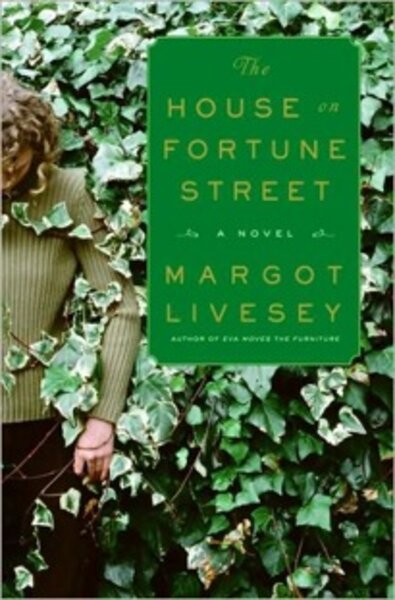A story told with help from literature's giants
Loading...
Bookworms love to imagine having real life mirror the plot of their favorite novel. What could be more romantic than, say, reliving the first encounter between Jane Eyre and Edward Rochester outside Thornfield Hall? Plenty, as Margot Livesey shows in her engrossing new novel, The House on Fortune Street.
Told from multiple viewpoints, “The House on Fortune Street,” looks at the lives of an idealistic therapist, Dara MacLeod, and her best friend from college, Abigail Taylor. The setup is deceptively simple: Abigail, who runs her own theater company, is living with Sean, an impoverished graduate student working on his endless dissertation about Keats. Dara, who rents out the basement apartment from Abigail, is in love with Edward, a violinist. But by page 60, one character is dead and the others are reeling.
Livesey (“Banishing Verona”) then rewinds the action to Dara’s childhood, as related by Dara’s dad. Dara herself covers her relationship with Edward, à la Brontë; and Abigail tells the story of their friendship at St. Andrews college in Scotland. Each section adds greater complexity and understanding, as Livesey looks at what it means to know someone profoundly – and to know the limits of that understanding.
Everyone had a book, or a writer, that was the key to their life,” Abigail’s beloved grandfather believed, and Livesey changes up her novel by having an English author preside over each section: John Keats, Charles Dodgson (aka. Lewis Carroll), Charlotte Brontë, and Charles Dickens. This is more than a gimmick – Livesey uses each writer to provide extra resonance to her tale. (Don’t worry, you don’t have to have a copy of the Norton Anthology of English Literature handy to enjoy “The House on Fortune Street.”)
First up is Keats, but Livesey is going for a more subtle effect than just yet another parroting of “Ode on a Grecian Urn.” This is the Keats who was plagued by “bill pestilence,” was wildly jealous if Fanny Brawne attended a party without him, and believed that “Life must be undergone.” In the real world, the ideals of romantic love (or scholarship, for that matter) can be hard on a guy.
Sean had been married (happily, he thought) when Abigail launched a “relentless” campaign to acquire him. “He knew the syllogisms of romance. He had broken his life apart for her; therefore she must be the love of his life,” Sean thinks. “More recently, though, he had found himself thinking that marriage was not merely an empty ritual. It was a plea for patience on the part of those involved, and for mercy on the part of bystanders.”
Livesey doesn’t shy away from taboo topics, nor, thankfully, does she use them to add a jolt of cheap adrenaline. Dodgson isn’t there for his mathematics or brilliant wordplay. Dara’s dad, Cameron MacLeod, shares Dodgson’s abnormal fascination with young girls and his hobby of photographing them. Livesey is circumspect with Cameron, who tries for decades to bury his impulses. (This is fortunate, since it’s very difficult for a reviewer to type with a full-on case of the heebie-jeebies.)
But she doesn’t let him off the hook, either. “How do you know?” the adult Dara challenges Cameron, when he tries to defend the author of “Alice in Wonderland” by saying,” but he never harmed [the girls].” She quickly clarifies: “I don’t mean what is the documentary evidence, but how can we be sure what harms a child?”
The final two sections delve into the friendship between Abigail and Dara, which appears faded to almost invisibility by the time Sean moves into Fortune Street. A character likens Abigail to Estella from “Great Expectations,” only to laugh that it’s hardly a flattering comparison. Dickens, as it happens, was Abigail’s grandfather’s favorite writer, from whom the Jewish immigrant strove to learn the important task of “how to be English.”
“More than most people, he told Abigail, Dickens understood how suddenly life can change: one day you can be respectable, the next in debtors’ prison. And the next, back again, in your top hat and gloves.” Abigail can relate: By 15, she’s on her own in a rented room, working two jobs after school and determined to claw her way to college. (Like Pip, she has an anonymous benefactor, but hers is less benevolent than his escaped convict.)
The prospect of a real friend entrances both lonely girls, who find unexpected parallels despite the differences in upbringing. “Each of them, they discovered, had had a version of Eden from which she had been expelled, abruptly and irrevocably, at the age of ten.”
Livesey isn’t interested in neatly tying off loose ends, which can lead to reader frustration when characters have served their purpose and vanish irrevocably. But while the psychological mystery that spurs the novel forward is gripping, it’s her clarity, of both writing and understanding, which elevates the novel. Also, because great last sentences are rarer than hen’s teeth, it must be noted that “The House on Fortune Street” has a doozy.
Yvonne Zipp regularly reviews fiction for the Monitor.






